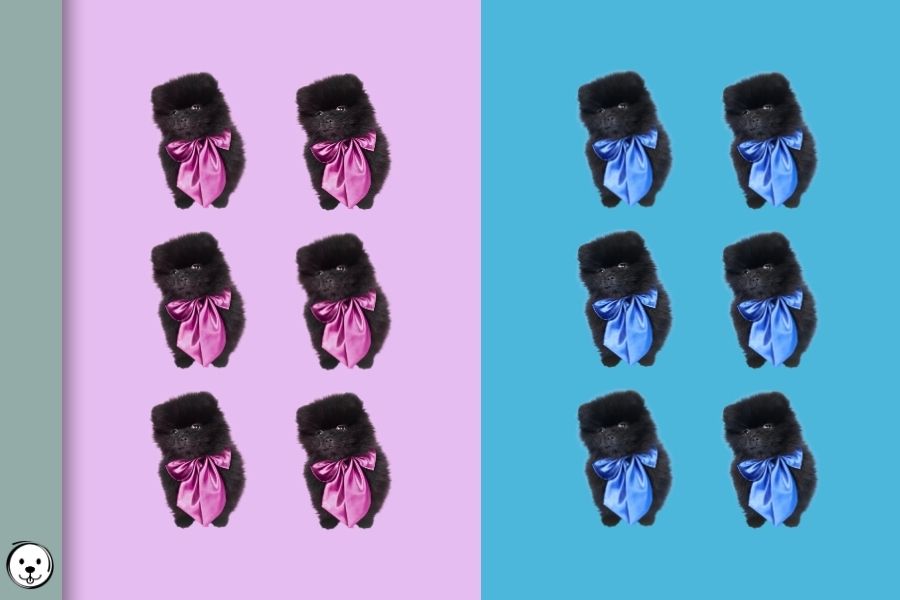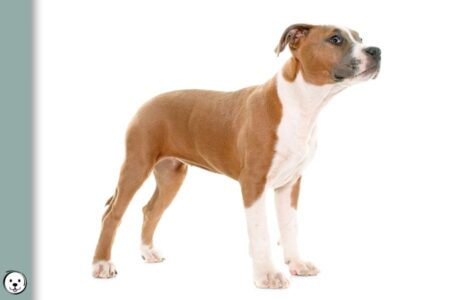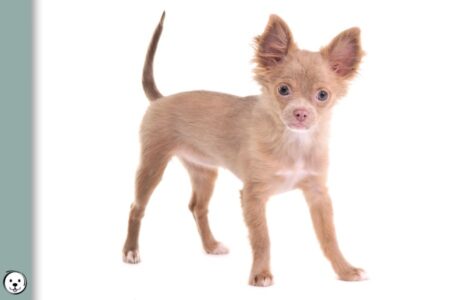What are the chances that a big litter of puppies will be all girls or all boys? We did the math for you and and put it in this easy-to-use puppy probability calculator!
Puppy Probability Predictor
X and Y Chromosomes
In dogs, each cell nucleus contains 39 pairs of chromosomes, a total of 78 chromosomes.
The first 38 pairs are called autosomes.
Autosomes are homologous chromosomes. The two chromosomes of each pair are built the same and contain the same genes in the same order along their chromosomal arms.
However, the 39th pair of chromosomes are called allosomes or sex chromosomes. These consist of two X chromosomes in females, and an X chromosome and a Y chromosome in males.

Females are XX, they can pass along either of their Xs to their puppies.
However, males are XY, they will pass along either an X or a Y.
It is the presence or absence of the Y chromosome that determines the sex of each puppy. So it’s up to the sire to produce either female (XX) or male (XY) offspring.
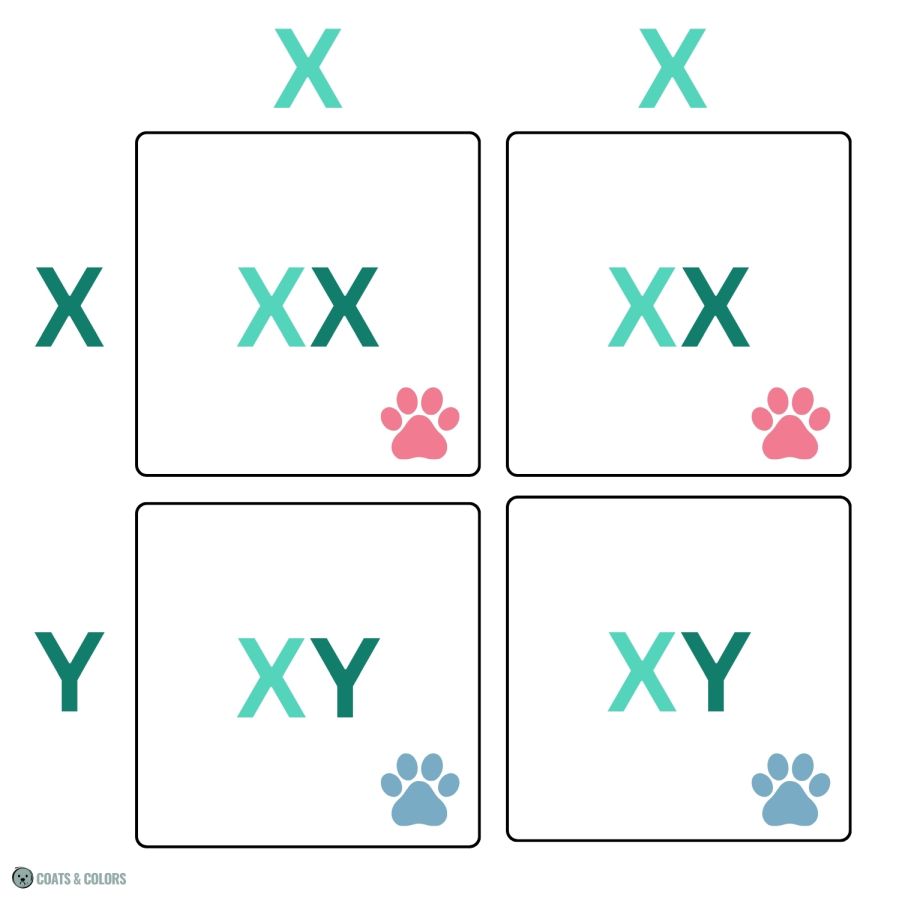
Puppy Probability
Each new puppy can be either a boy or a girl.
So there are two potential outcomes for each puppy.
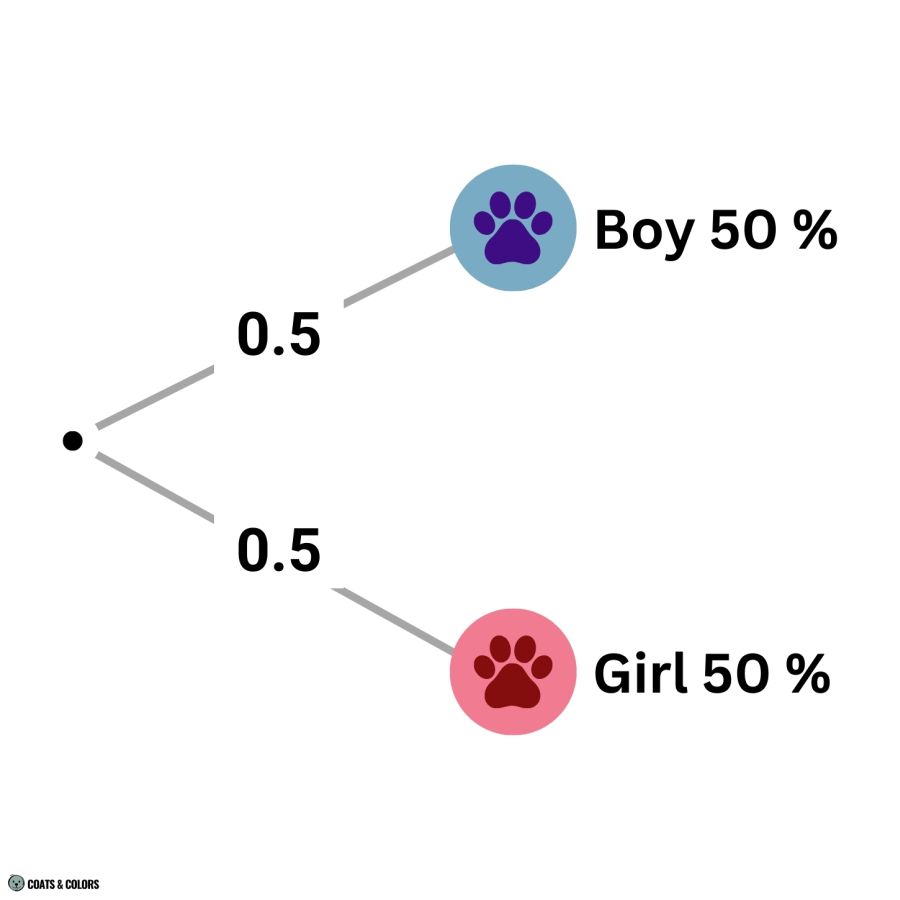
Probability measures the likelihood that an event will occur.
The chances that any new puppy will be male or female is 50% or 1/2 which equals 0.5.
Each new puppy is an independent event, it does not matter how many of his siblings are boys or girls.
The 50 % chance stays the same for each new puppy.
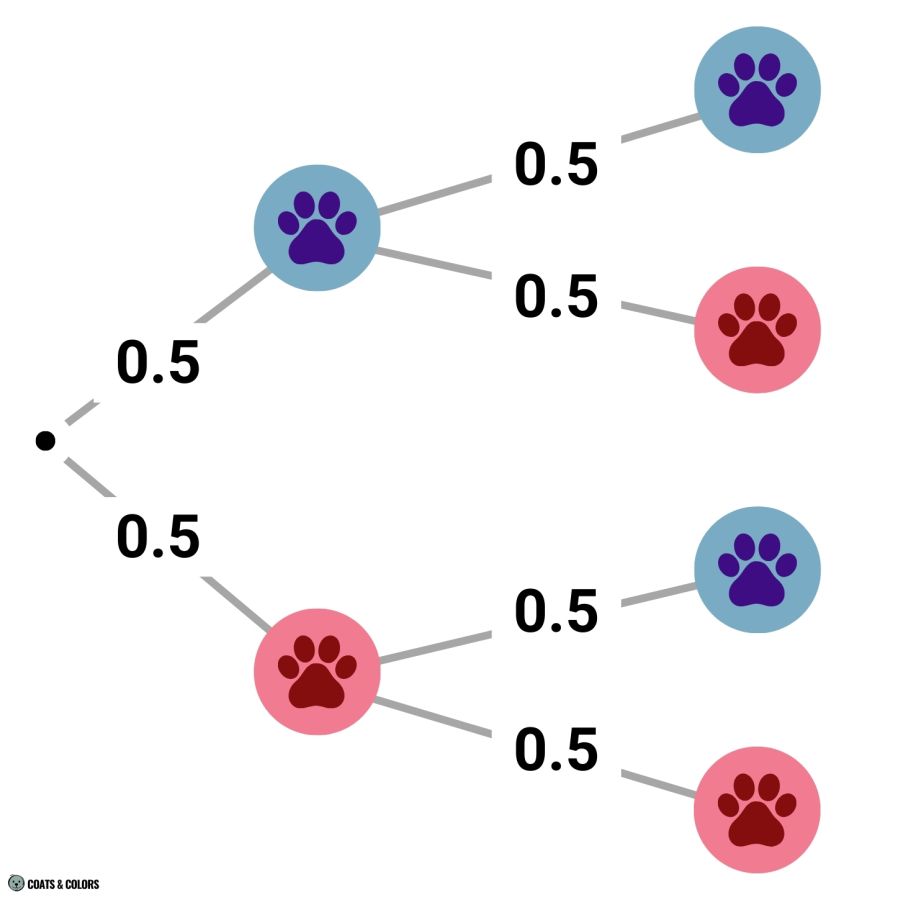
In this litter of 2, we have 4 possible outcomes:
Boy, Boy
Boy, Girl
Girl, Boy
Girl, Girl
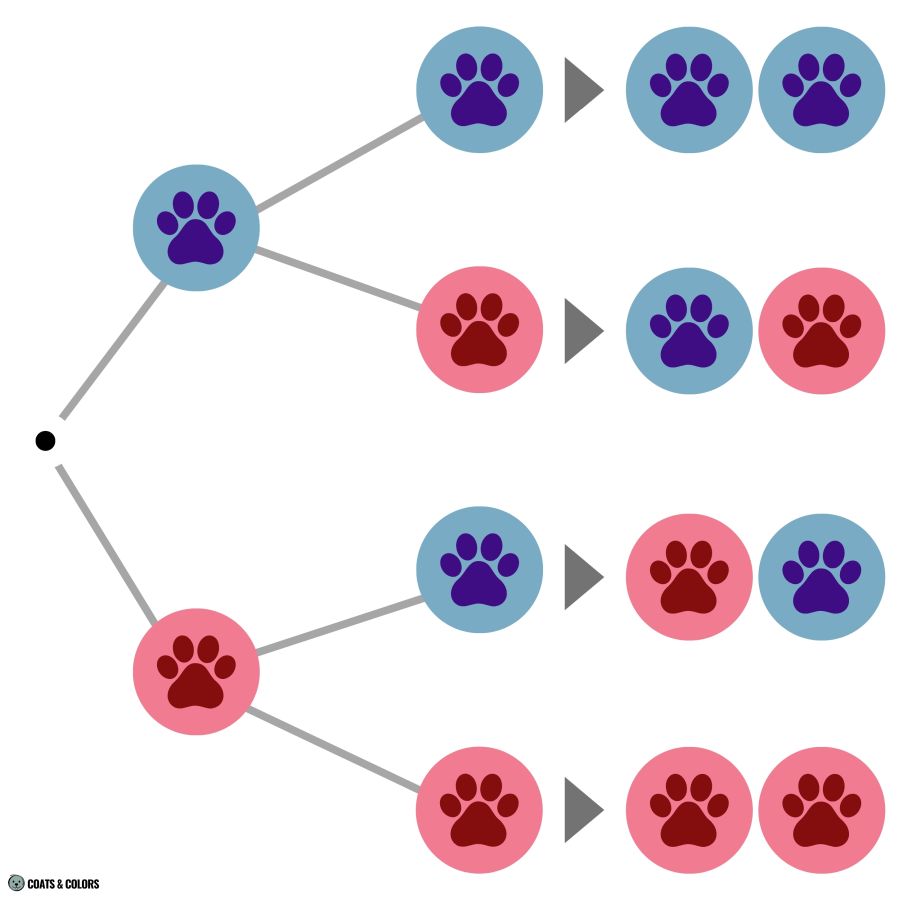
These different outcomes are also called permutations.
Permutation:
“Any of several possible ways in which a set of things can be ordered or arranged.”
The number of all possible permutations in a litter equals 2(number of puppies).
For a litter of 2, you have a list of only 22 or 2*2 = 4 permutations.
For a litter of 4, you have a list of only 24 or 2*2*2*2 = 16 permutations.
Permutations take into account in which order puppies are born. We will come back to this later.
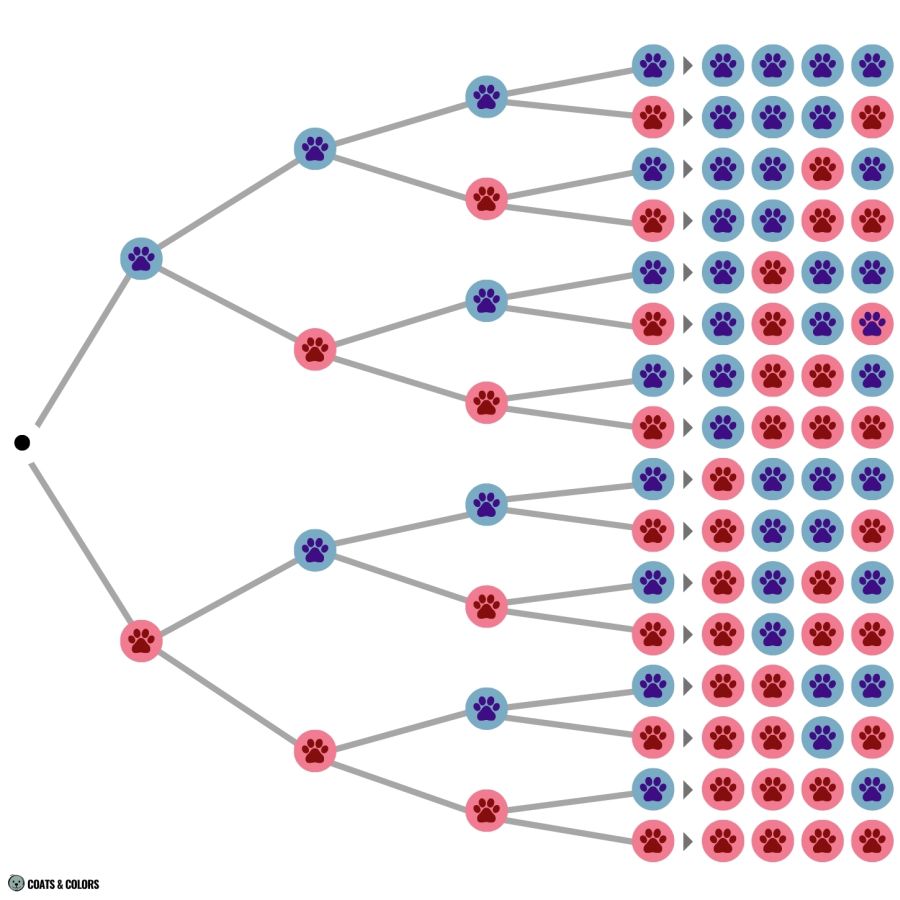
The number of permutations doubles with each additional puppy:
| Litter Size | Number of Permutations |
|---|---|
| 1 | 21 = 2 |
| 2 | 22 = 4 |
| 3 | 23 = 8 |
| 4 | 24 = 16 |
| 5 | 25 = 32 |
| 6 | 26 = 64 |
| 7 | 27 = 128 |
| 8 | 28= 256 |
| 9 | 29 = 512 |
| 10 | 210 = 1.024 |
| 11 | 211 = 2.048 |
| 12 | 212 = 4.096 |
| 13 | 213 = 8.192 |
| 14 | 214 = 16.384 |
| 15 | 215 = 32.768 |
| 16 | 216 = 65.536 |
| 17 | 217 = 131.072 |
| 18 | 218 = 262.144 |
| 19 | 219 = 524.288 |
| 20 | 220 = 1.048.576 |
If you know the number of possible outcomes, you know that each permutation in a litter of 4 has a chance of 1/16 because there are a total of 16 possible permutations.
Another way to calculate the chance for any single permutation is simply to multiply the probability of 0.5 by the number of puppies in your litter.
It does not matter which path you follow from start to end. Each permutation is equally likely:
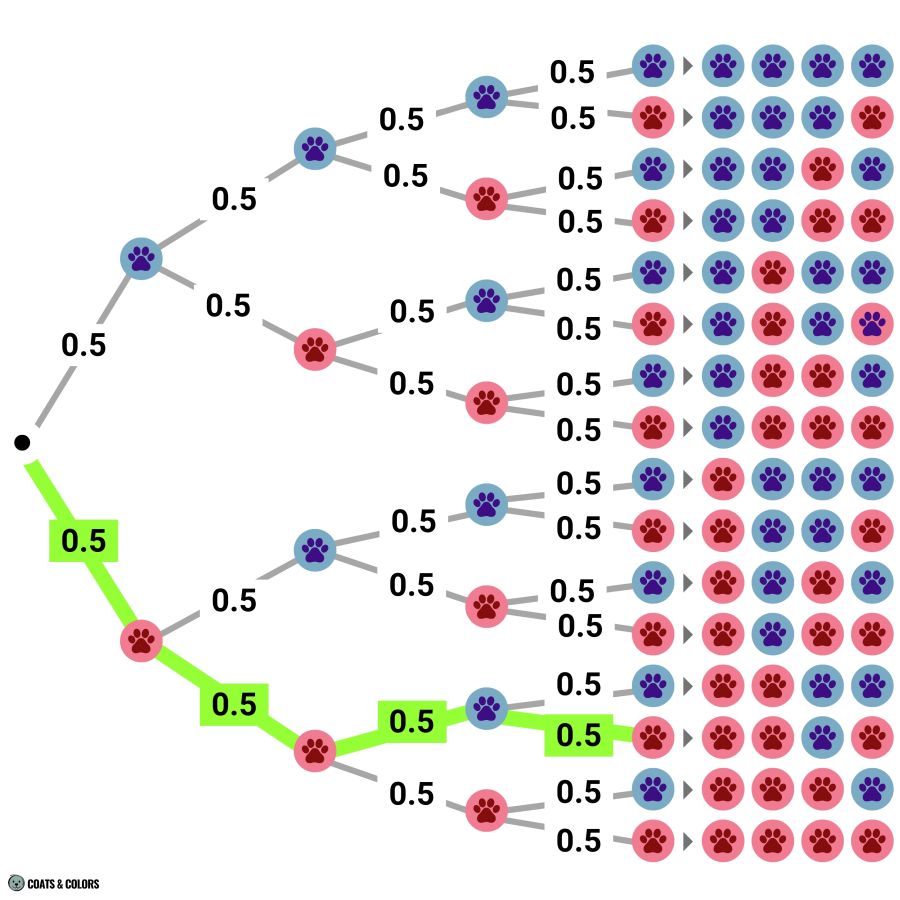
In a litter of 4, each outcome has a chance of 1/16 = 0.54 = 0.5*0.5*0.5*0.5 = 0.0625.
Next, multiply with 100 and you get the probability in percent: 0.0625 * 100 = 6.25 %.
For a litter with either all boys or all girls, that’s all you need! Because no matter how many puppies you have, there will only ever be one order that can produce an all-male or all-female litter.
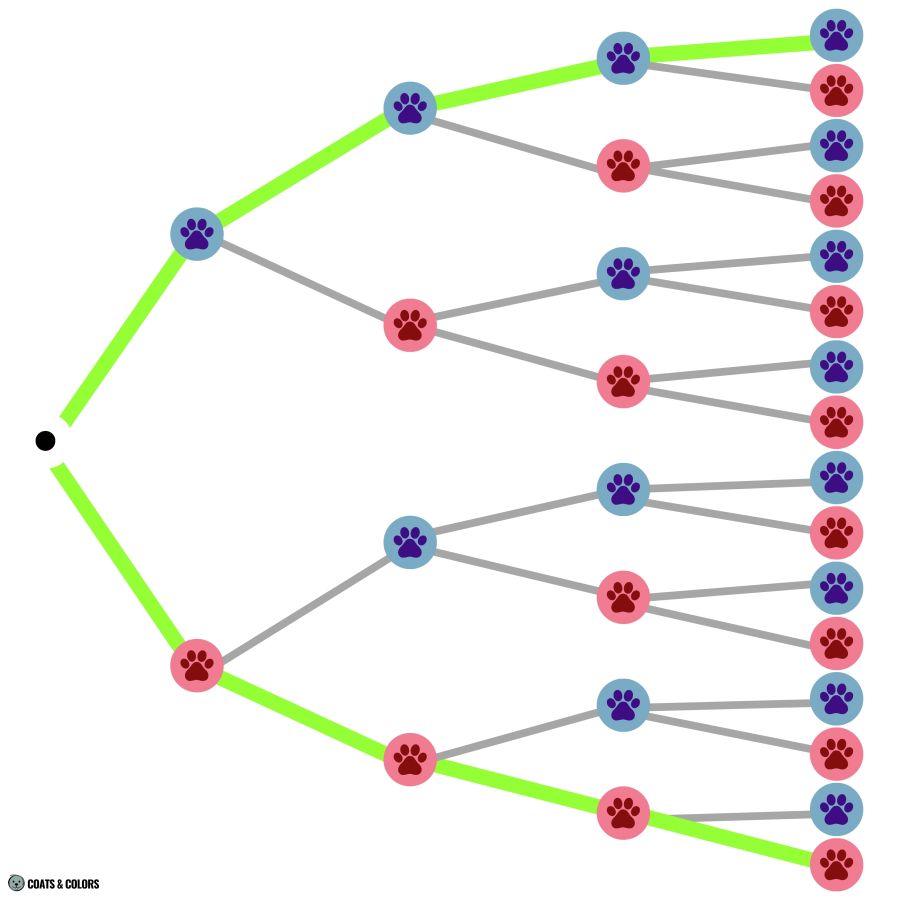
But for the other ratios of boys to girls, we still often have several outcomes that can lead to the same result. That is because each permutation takes into account the order in which puppies are born.
Each permutation represents exactly one order of events.
This means, getting boy-boy-boy-boy is just as likely as getting girl-boy-boy-boy!
Both have a chance of 0.5*0.5*0.5*0.5 or 6.25 %.
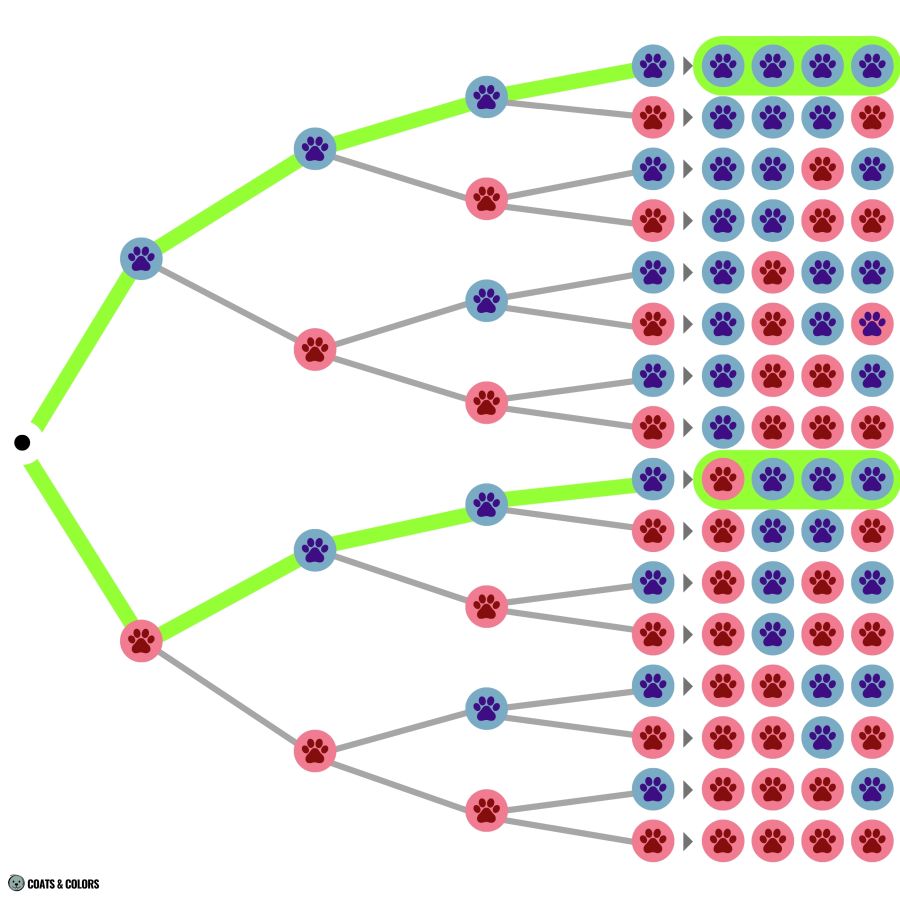
However, breeders do not care in which order their boys and girls are born.
If we ignore the order, we can sort our outcomes by their final number of boys and girls.
For example:
There is only one permutation that will produce 4 girls.
However, four permutations meet the criteria of 3 boys and 1 girl!

If we summarize the unique end results, it looks like this:
| Boys/Girls | Permutations | Chance | Sum |
|---|---|---|---|
| 4/0 | BBBB | 6.25 % | 6.25 % |
| 3/1 | BBBG BBGB BGBB GBBB | 6.25 % 6.25 % 6.25 % 6.25 % | 25 % |
| 2/2 | BBGG GGBB GBGB BGBG BGGB GBBG | 6.25 % 6.25 % 6.25 % 6.25 % 6.25 % 6.25 % | 37.5% |
| 1/3 | GGGB GGBG GBGG BGGG | 6.25 % 6.25 % 6.25 % 6.25 % | 25 % |
| 0/4 | GGGG | 6.25 % | 6.25 % |
To calculate the probability of events that can be achieved in several ways, simply add up the odds.
In our example, the chance for 3 boys and 1 girl is 6.25% + 6.25% + 6.25% + 6.25% = 25% because there are four ways to get there (BBBG, BBGB, BGBB, GBBB).
By the way…
You can think of puppy gender as a coin-flip experiment, the math is the same.
You can use this calculator for any scenario with two possible outcomes and a 50/50 chance.
- What are the chances for only merle puppies in a M/m x m/m litter with 6 puppies? About 1.6 %
- How likely is it to have 5 tan point and 5 sable puppies in an Ay/at x at/at litter? About 24.6 %
- What are the odds of getting only black puppies in a B/b x b/b litter of 8? About 0.4 %.
The 50/50 Chance
The 50/50 chance for boys and girls does not predict the ratio of puppies in a litter.
Rather, each puppy has a 50% chance of being a boy or a girl.
From this, we can calculate how likely it was that your litter happened as it did.
However, probabilities will never reliably predict single events, just their average distribution in a large number of repeated trials. They provide the likelihood of different outcomes over the long run.
Even with even odds for a boy or girl, the outcome of a whole litter of puppies is random.
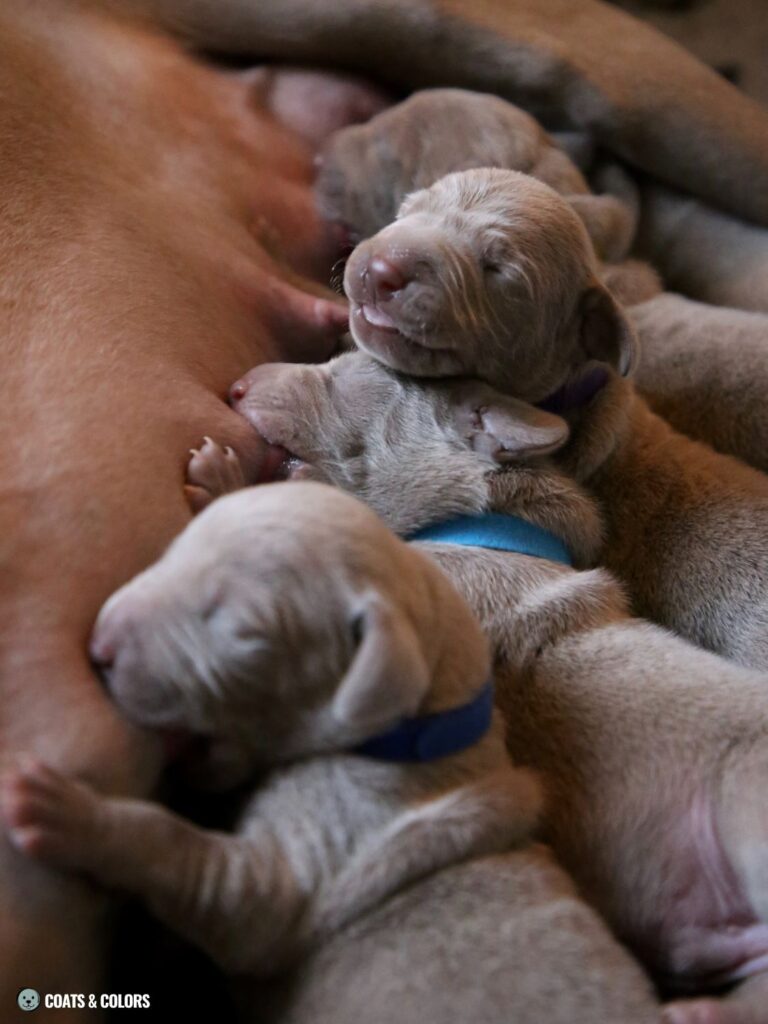
Anecdotally, breeders will tell stories about sires or dams with a tendency to produce mostly boys or mostly girls. But keep in mind that individual dogs and their offspring count are really small samples.
You can’t read that much into these small numbers.
All humans tend to see patterns where there are none, this makes us prone to superstitious beliefs.
Based on “anecdotal data“, it is not possible to prove whether an observed ratio of boy/girl puppies is just random or whether the supposed 50/50 chance really is skewed.

So, is there a true 50/50 chance for every puppy to be born a boy or a girl?
Well, if you look at large enough sample sizes, the boy-to-girl ratio should be very close to 50/50.
In reality, there might be a slight bias towards male puppies.
But the more litters you look at, the higher the chance of reaching 50%.
A study that looked at only 436 litters found about 52% of puppies to be boys[5]. Another study that analyzed 37.946 litters found a proportion of male puppies of 51.2 %[6].
Just as, let’s say, litter size is determined by a number of things, there seem to be just as many factors that can tweak the 50/50 chance for boys or girls.
Think of variables such as the breed of dog, the ratio of X to Y sperm cells a sire can produce, vaginal pH during fertile days, the timing of mating, or the age gap between a breeding pair[1-4].
There seem to be a fair amount of factors that can slightly skew the odds for specific dogs or pairings to produce an off ratio. However, these findings are not necessarily consistent across breeds.
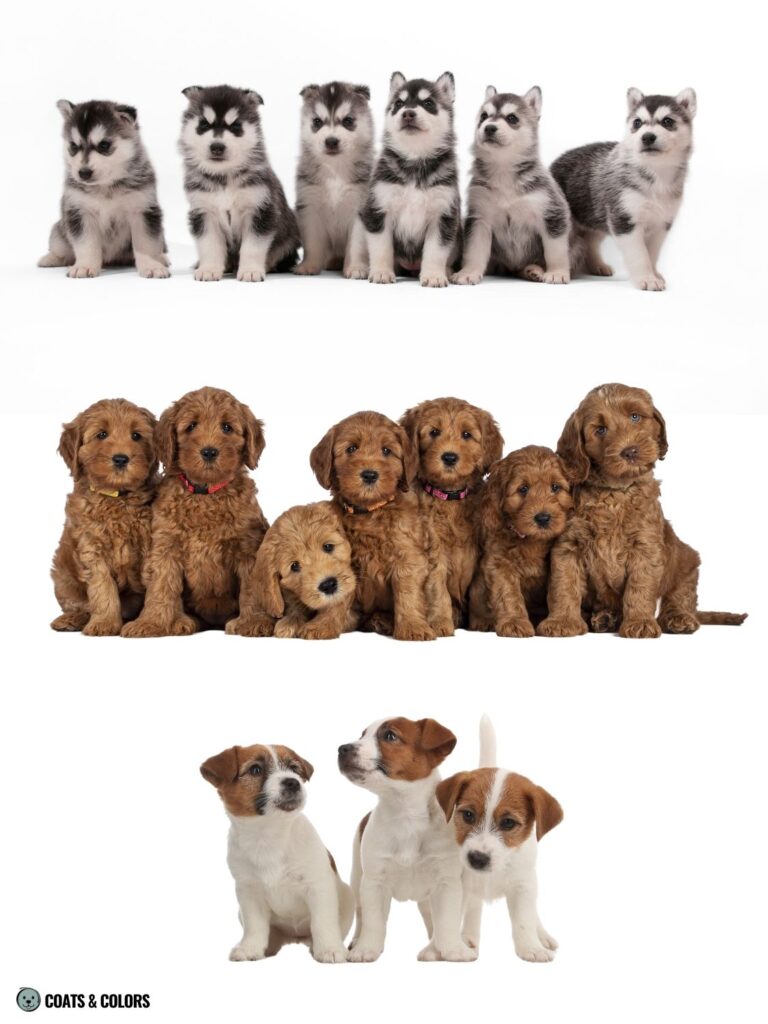
Even the coin flip, a classic example of 50/50 probabilities, turned out to be slightly off in real life. To get to this conclusion, they tossed the coin a whopping 350.757 times.
Can you confirm these results by tossing a coin 100 times at home? Of course not.
So again, you can’t reliably prove a skewed ratio based on small samples!
Even if your stud dog really had a 60% or 70% chance of producing boys and was the most popular of sires, there is no way to confirm this based on his comparatively small number of puppies.
In summary, even with an undeniable amount of variation in real-life scenarios, the probability of getting heads or tails, or in our case boys or girls, still does not stray too far off from a 50/50 chance.
So for the purpose of our calculator, I think it’s ok to assume an even 50 % chance.
Learn More
Links
[1] Anna Carolina Lopes Martins et al. (2019). Maternal age, paternal age, and litter size interact to affect the offspring sex ratio of German Shepherd dogs. Theriogenology 135. https://doi.org/10.1016/j.theriogenology.2019.06.022
[2] Schrack et al (2017). Factors influencing litter size and puppy losses in the Entlebucher Mountain Dog. Theriogenology 95. https://doi.org/10.1016/j.theriogenology.2017.03.004
[3] Groppetti et al. (2023). An exploratory study on the sperm ratio in dogs: repeatability over time and some reproductive effects. Archives of Veterinary Science 28.2.
[4] Antonov et al. (2014). Dynamics of Vaginal pH in the Bitch during Proestrus and Estrus. Animal and Veterinary Sciences. https://doi.org/10.11648/j.avs.20140204.13
[5] Kania-Gierdziewicz (2019): Effect of inbreeding on fertility traits in five dog breeds. Czech J. Anim. Sci. https://doi.org/10.17221/104/2017-CJAS
[6] Chastant-Maillard et al. (2016). Reproductive performance and pre-weaning mortality: Preliminary analysis of 27.221 purebred female dogs and 204.537 puppies in France. Reprod Dom Anim. https://doi.org/10.1111/rda.12845
[7] Lindblad-Toh et al. (2005). Genome sequence, comparative analysis and haplotype structure of the domestic dog. Nature 438. https://doi.org/10.1038/nature04338

Hi! I’m Steffi. I am a biologist and a big time dog nerd. You are curious about coat color genetics? You’ve come to the right place! Read more.

